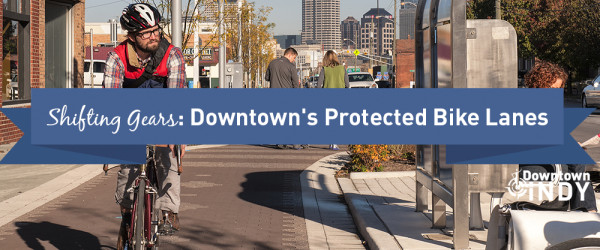Five years ago, Indianapolis had less than five miles of bike lanes. Recently, however, Indianapolis – a city known for fast cars – has shifted gears and added additional amenities for bicyclists. Over the next nine years, the Indianapolis Bikeways Plan will create more than 200 miles of bike lanes across the City.
Indianapolis 1990:
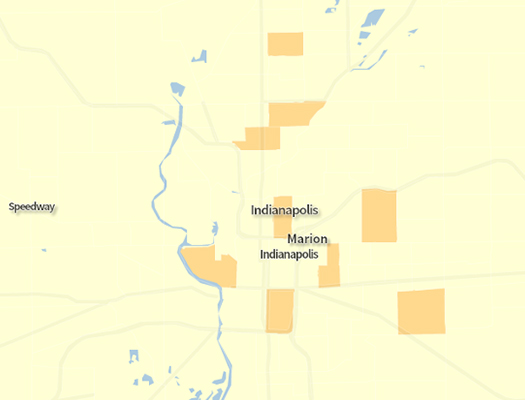
Biking is on the rise in Indianapolis. In the lightest-colored regions on these maps, less than one percent of the population gets to work by bike. Source: PeopleForBikes
Indianapolis 2012:
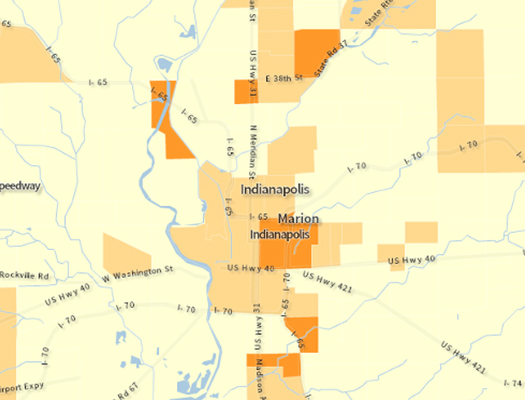
In the darkest-colored regions, more than 10 percent of the population gets to work by bike. Source: PeopleForBikes
Cyclists (and drivers) may have noticed the recent addition of protected bike lanes to Pennsylvania Street, one of Downtown’s most traveled streets. Before that, the city of Indianapolis built a 0.5 mile protected bike lane on 30th Street from North White River Parkway to North Harding Street. In 2011, the city completed a one mile protected bike lane on Shelby Street. And of course our city’s most recognized bike trail – The Cultural Trail – a protected bike lane separated by curb and parked cars.
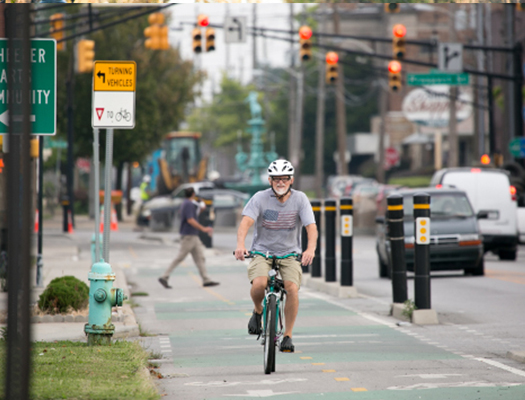
Shelby Street in Fountain Square is a model for the city’s two latest protected-lane projects. Photo by PeopleforBikes.
Protected bike lanes are a simple concept: they’re like sidewalks for bikes. These lanes are physically separated from cars by a curb, planter or other barrier. Protected bike lanes not only provide greater visibility for cyclists, they also improve quality of life for Downtown residents and visitors – making our city safer, healthier and more progressive. These lanes make cycling a pleasant and practical way for many people (not just the bold or athletic) to hop on the saddle.
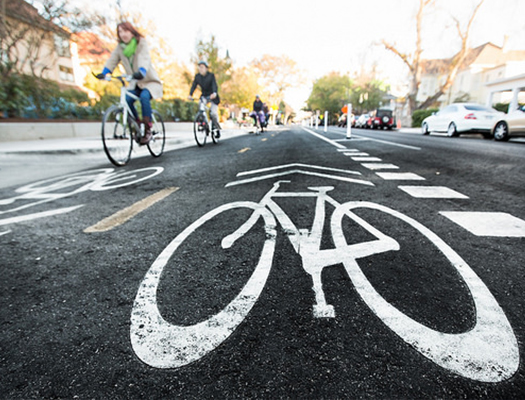
Protected bike lanes shield bicyclists from vehicle traffic. They are a step beyond pavement-marked bike lanes. Photo by Adam Coppola.
Any major city that wants to attracts new businesses, residents and visitors needs sidewalks, parks and bike lanes. Downtown dwellers want to be connected to their neighborhood and city through means other than a car.
“We are really trying to provide on street bike lanes that offer a low stress experience similar to that of the Cultural Trail and our greenway system,” said Jamison Hutchins with the Department of Public Works. “By providing viable options for these people, it will reduce the need for more people to be driving cars short distances, competing for limited parking spots and potentially creating congestion.”
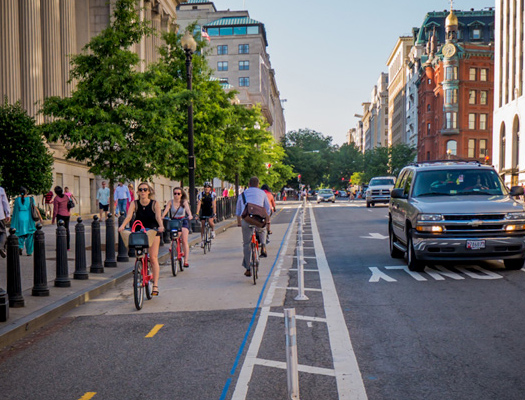
If you build it, people will ride it. On Washington, DC’s first protected bike lanes, bike traffic has been growing seven times faster than the citywide rate. Photo by PeopleforBikes.
The Pennsylvania Street protected bikes lanes are just the start of the bike-friendly action you will begin to see Downtown. Downtown continues to see an increased percentage of bicycle ridership, and the City wants to support that. The Department of Public Works is also working on adding protected bike lanes on New York and Michigan Streets, both on the west side of town (near IUPUI) and the east side (near College and Rural).
“With the huge influx of people moving into the mile square of Downtown and all of the development, we are providing options for people that want to live, work and play within a smaller footprint,” Hutchins said.
The bike lanes are part of The Green Lane Project, a PeopleForBikes program that helps U.S. cities build bike lanes that everyone can enjoy using. In March 2014, the group chose Indy as one of six cities to help with the installation, recognizing our ambitious goals and a strong vision supported by our elected officials and communities.
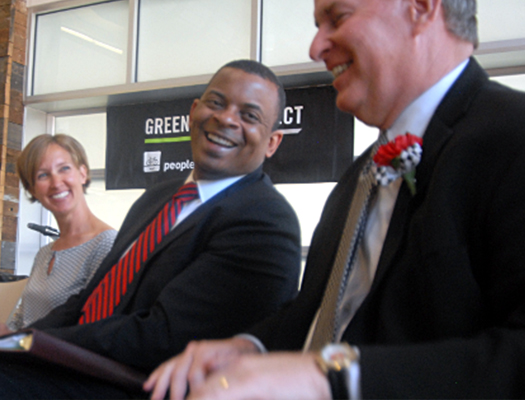
In 2014, PeopleforBikes selected six new cities to build better bikes lanes: Atlanta, Boston, Denver, Pittsburgh, Seattle and Indianapolis. The Project kicked off the collaboration with a gathering and press conference in Indianapolis. Photo by PeopleforBikes.
Thanks to the success of the Cultural Trail, and Mayor Greg Ballard’s support for urban bike infrastructure, Indianapolis is on its way to be a bike-friendly leader with diverse groups of people riding, from women and men in office attire, to urban residents and families with kids in tow.

